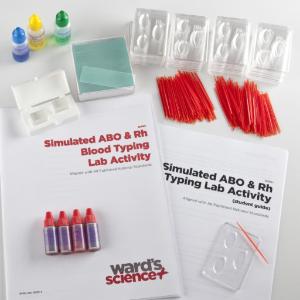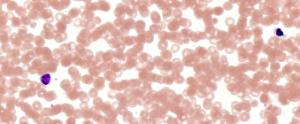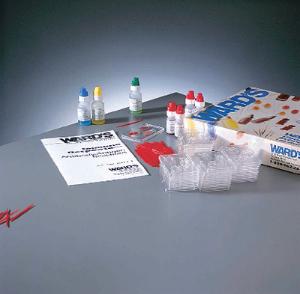Blood facts! Plus a free handout from AccessScience
Access to this content is available to Ward’s World readers for free from McGraw Hill’s AccessScience, an award-winning, digital STEM resource that provides immediate, authoritative answers to students’ thirst for scientific knowledge on topics such as climate change, virology, pollution, and more. Ward’s World and McGraw Hill have partnered to offer educators a no-obligation, free trial subscription to this product. Request your free trial today and discover how valuable AccessScience can be for you and your students.
High School
You can B positive the inquiring minds in your class will soak up the fascinating facts about blood. That’s why ‘we want to link your blood' science lesson plans to some fascinating details students will enjoy. No pressure, take what you like and leave the rest.
Blood delivers oxygen and nutrients, helps fight infections, hauls away waste, and much more. Encourage students in your class to explore some of the lesser-known facts about this precious fluid.
Why is human blood red?
Our blood is red to the naked eye. Human blood is red because it contains the iron-rich protein hemoglobin, which gives it that famous red color. But, of course, we can see the detailed color variations of blood’s various components under a microscope.
A follow-up question for students that flows well from this concept is, “Why do octopuses and horseshoe crabs have blue blood?” Students will be pumped when they discover that these creatures have the blue protein hemocyanin instead of hemoglobin, like humans.
Why is blood type important?
There are mainly four types of blood groups among humans, A, B, AB, and O. Ask students which blood type they are. With your lesson plan, they’ll discover we don’t ask this question in ‘vein.’ Blood typing is essential if you need a blood transfusion or want to donate blood.
The antigens on the surface of red blood cells determine our blood type. Antigens are substances that help the body differentiate between its own cells and foreign, possibly harmful ones. If your body thinks a cell is foreign, it will try to destroy it.
The ABO blood typing system groups your blood into one of four categories:
- Type A has the A antigen.
- Type B has the B antigen.
- Type AB has both A and B antigens.
- Type O has neither A nor B antigens.
Take your lesson to another level by helping students explore why the Rh antigen (Rh Factor) is tested under the Rh System and expands the categories to eight blood types. That’s no typ-O; this system really has eight types:
- A RhD positive (A+)
- A RhD negative (A-)
- B RhD positive (B+)
- B RhD negative (B-)
- RhD positive (O+)
- RhD negative (O-)
- AB RhD positive (AB+)
- AB RhD negative (AB-)
Download McGraw Hill’s AccessScience article, Blood, to develop your lesson plans that help students understand concepts on formed elements, plasma, and coagulation. The free download also includes assessment questions and answers you can use to test student understanding.
Recommended Products
[StartProductBlock]

Simulated ABO and Rh Blood Typing Lab Activity
With safe and nontoxic simulated blood, students can simulate a blood-typing experiment and delve into the concepts of Rh typing.
[EndProductBlock]
[StartProductBlock]

Human Blood Slide
Shows the three major functional classes: red cells, white cells and platelets.
[EndProductBlock]
[StartProductBlock]

Ward's® Immune Response: Antigen/Antibody Reactions Kit
Students determine which of four possible donors could safely donate blood to a patient.
[EndProductBlock]
